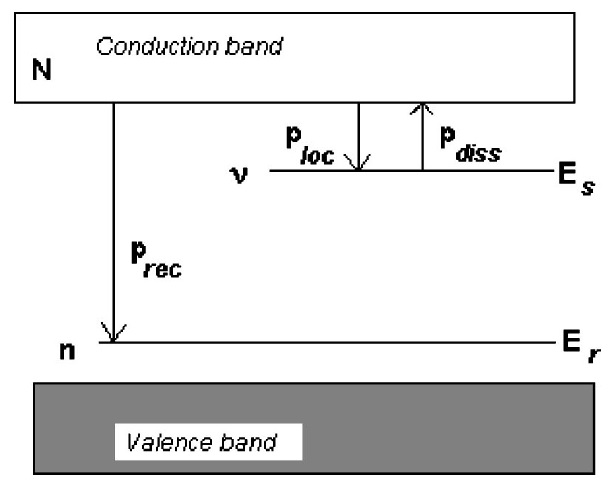First of all, we have chosen alga Acetabularia acetabulum (A.a.) as a biological system to test and verify our hypothesis on the DL origin from an experimental and theoretical point of view. The A.a is an unicellular organism containg a photosynthetic system.We have considered the charge transfer processes in systems, which produce photosynthesis. Photosynthesis takes place in chloroplasts, which include so called photosystem I (PSI), that produces NADPH and has 730 nm maximum in the fluorescence spectrum, and photosystem II (PSII) that participates in the transport of electrons and produces molecular oxygen and has 680 nm maximum. The PSII includes transmebrane polypeptide chains with molecular mass greater than 600 kD. We hyphothesized that DL emission is connected to the electron transport in PSII powered up by a photon absorption. In the polipetide macromolecules, costituting PSII, extra electrons can form electrosolitons. When in the electron transfer chain an extra electron is transferred from a donor molecule to one of the subunits of the macromolecule, it affects the nearest surrounding due to the exchange interaction with the nearest neighbors and electron-phonon interaction with hydrogen bonds along a chain. This results in the creation of the local distortion of the chain which, in its turn, plays the role of the potential well for the electron itself and leads to the self-trapping (autolocalization) of an electron.

figure 3. - Energy level scheme of DL in the presence of the self-trapped states. Er is the energy level of the reaction center, Es is the energy level of a self trapped state
We have supposed that the DL arises from the decay of these localized states into the conductive electron band and the subsequent transition in to the reaction centers that are so the ionized centers of luminescence. We so hypothesized that in green plants DL emission is connected with the processes occurring in chloroplasts, and is related to the presence of self-trapped soliton levels in macromolecules forming the photosystem and the cytoskeleton of a cell. This model has provided a qualitative and quantitative explanation of the main characteristic features of DL from A.a. taking into account the experimental fact that the DL lasts from few seconds to few hours, which indicates that to a great extent it is related to the long-living photoinduced excitations in the system, that is the kinetics of time decay; the nonlinear dependence on the intensity of the stimulating light; the same time trend for all the emission spectral components.


